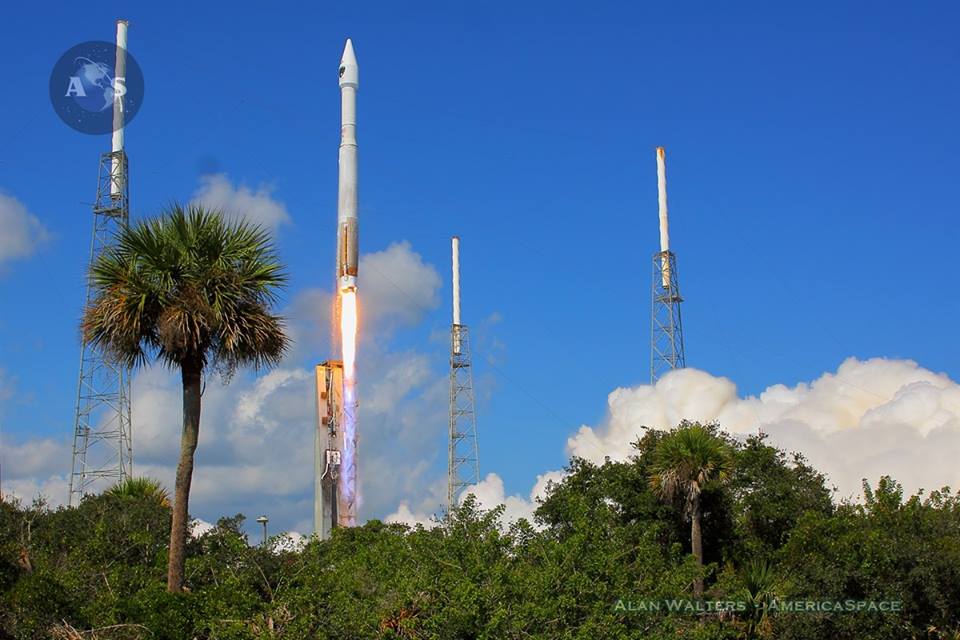
The Halloween launch of the Air Force/Boeing GPS 2F-11 satellite on a United Launch Alliance (ULA) Atlas-V rocket begins a season of change for ULA and its new military space competitor SpaceX, who wants to hand ULA its head in future Air Force competitions. Space launch management reorganizations at both ULA and the Air Force are part of the looming ULA versus SpaceX competition.
ULA this week made wholesale changes in its launch and marketing management as part of an effort to shrink management by 30 percent while bringing in new outside expertise to lead the company.
The GPS launch was delayed one day from Oct. 30 when repairs had to be made to a leaking valve in the Launch Complex 41 water deluge system.
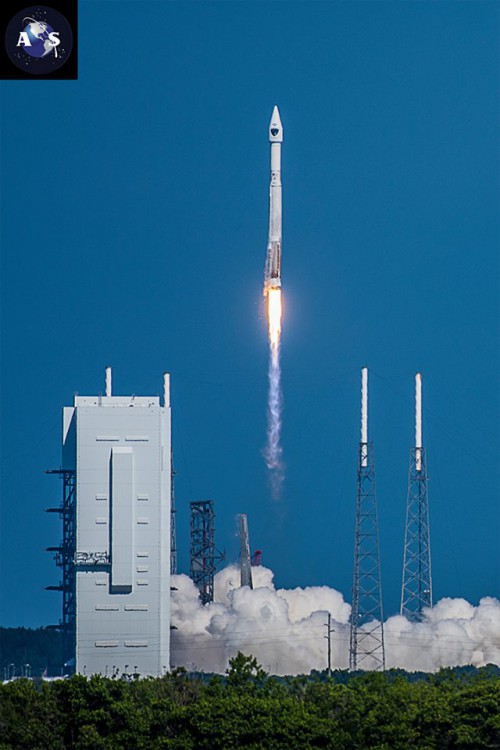
The liftoff into sunny skies of the of the 196-foot-tall Atlas-V 401 rocket, with no solid rocket boosters, occurred at 12:13 p.m. EDT at the opening of a 19-minute launch window. Powered by 860,000 lbs (390,089 kg) of thrust from its Russian Energomash RD-180 engine, the Atlas flew northeast directly up the eastern seaboard on a launch azimuth of 45.8 degrees before arching over eastern Newfoundland.
“Congratulations to the entire team on today’s successful launch of the GPS IIF-11 satellite! Today’s launch was made possible by the exceptional performance and teamwork exhibited by the entire team, including the men and women of ULA, our many mission partners, and our U.S. Air Force customer,” said Jim Sponnick, ULA vice president, Atlas and Delta Programs. “GPS is omnipresent in our everyday lives and the system provides a critical service to the all of those serving in our military around the world. All of the operational GPS satellites have been launched on Atlas and Delta rockets and the U.S. Air Force does an outstanding job of operating this essential system.”
At 4 minutes 19 seconds into the flight, the RD-180 shutdown and first stage separation was followed by the first ignition of the second stage Centaur Aerojet Rocketdyne RL10C engine, generating 22,900-lbs (10, 387-kg) thrust. That critical firing lasted about 13 minutes until cutoff over the mid-North Atlantic.
After coasting for 3 hours 17 minutes, the Centaur was restarted for a roughly 90-second second burn, followed by spacecraft release from the Centaur south of Australia, near Antarctica 3 hours 23 minutes after liftoff, in an 11,047 nautical mile orbit inclined 55 degrees to the equator.
The mission ends the busiest month ever for Atlas-Vs, involving more than $1.5 billion in rocket and satellite hardware. During October, three $164 million Atlas Vs orbited four satellites, including:
—The $245 million GPS 2F-11 today.
—The $500 million NRO-55 twin military ocean surveillance satellites launched Oct. 8 from Vandenberg AFB, Calif.
—And the $300 million Boeing/Morelos 3 satcom launched from the Cape Oct. 2 on ULA’s 100th successful mission (including Delta IVs).
The next and final GPS 2F satellite, GPS 2F-12, is being readied for a similar Atlas V launch in February, after the planned return to flight in December of the SpaceX Falcon 9 on what could be an impressive but also risky mission carrying 11 Orbcomm communications satellites.
Also as early as Dec. 3, a ULA Atlas-V is to launch the fifth Orbital Sciences Cygnus freighter to the International Space Station on the return to flight for the Cygnus after the spectacular failure of an Antares/Cygnus-4 launcher at Wallops, Va., almost exactly one year ago.
ULA, around March 10, 2016, is to use another Atlas V to launch a second Cygnus before Orbital ATK’s Antares rocket returns to flight later in 2016.
The new 3,400-lb (1,542-kg) GPS 2F-11 will replace the GPS 2R-10 launched in 2003. That 12-year-old spacecraft will take on a backup role in the expanded GPS constellation with more than 30 spacecraft that ensures at least 24 satellites are operational at any given time, with four spacecraft in view of any given spot on Earth.
The flight marked the 59th Atlas V launch overall and the 29th Atlas 401 with no solid motors, a 13-foot (4-meter) shroud, and a single engine Centaur upper stage.
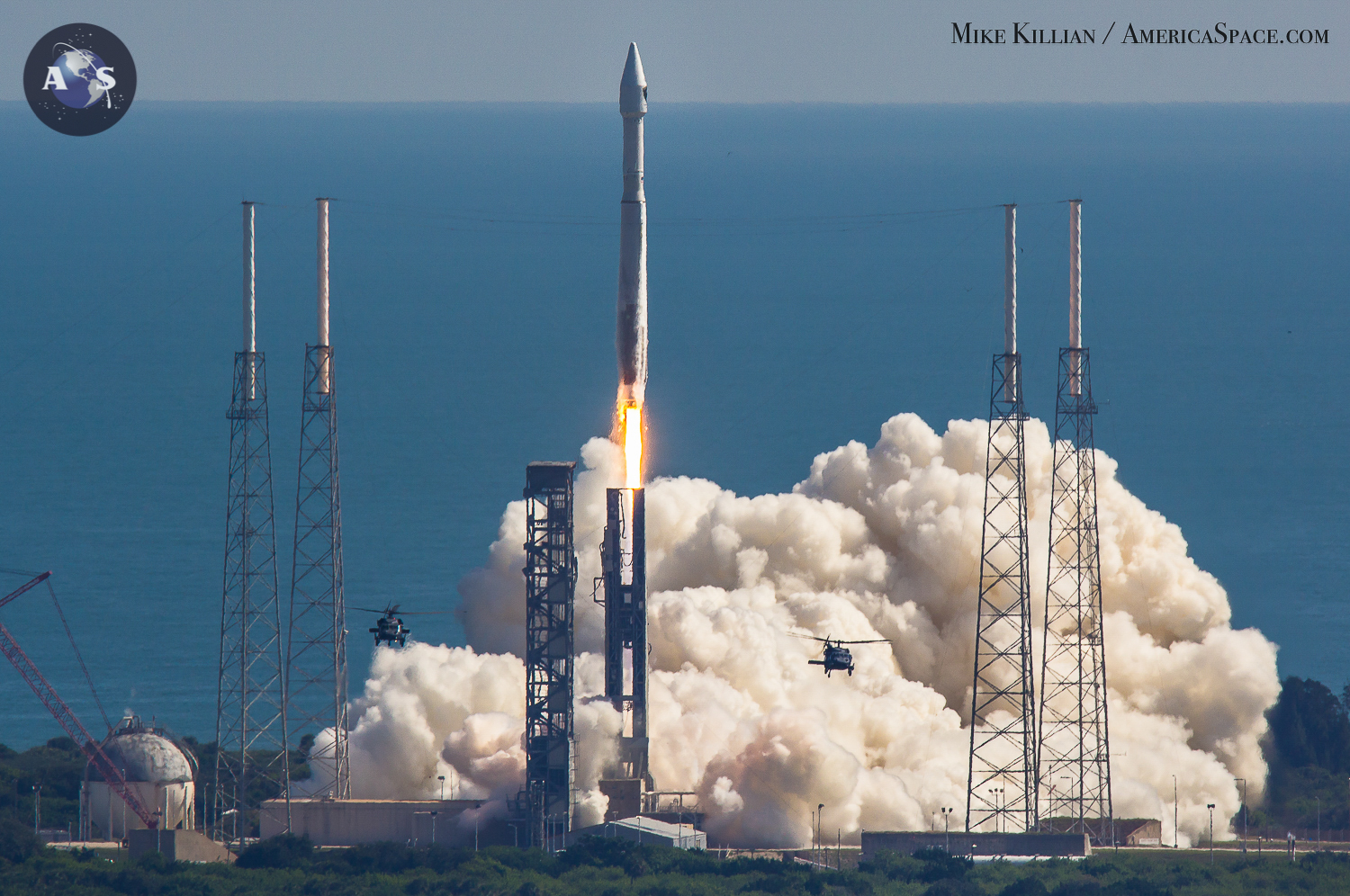
Within the last days leading up to this launch, both the Air Force and ULA made significant changes to their space launch organizational structures.
On Oct. 14, at the Air Force Space and Missile Systems Center (SMC), Los Angeles Air Force Base, commanders officially stood up a new Launch Systems Enterprise Directorate geared to better initiate new competition between SpaceX and ULA.
The Air Force says that under the leadership of Dr. Claire Leon, the new directorate brings together the Launch Systems Directorate and the Rocket Systems Launch Program (RSLP) which formerly fell under SMC’s Advanced Systems and Development Directorate at Kirtland AFB, N.M.
“Until today, the Air Force has procured and executed space launch capabilities through two separate organizations,” said Lt. Gen. Samuel Greaves, the Air Force program executive officer for space and the SMC commander. “This created the potential for ambiguity among our stakeholders and a disconnect in our acquisition strategy,” he said. With this change “we unify Air Force space launch capabilities under one directorate to synchronize our acquisition activities,” Greaves added.
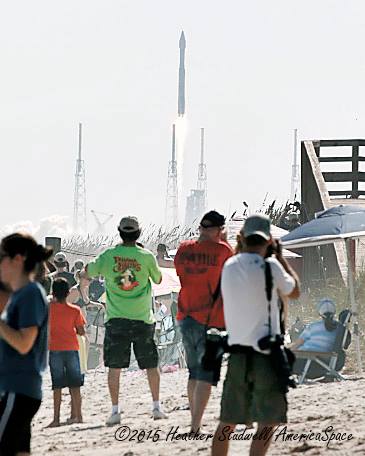
“Space launch is not a service for which one must come up with a value proposition, but rather it is a must-have utility in our national policy of assured access to space,” Greaves continued.
“As the space environment continues to evolve with the addition of new [launch vehicle entrants like SpaceX], we must build upon that foundation to drive and provide innovative, resilient, and affordable launch solutions for the Air Force and the nation.”
The Launch Systems Directorate’s mission was to acquire, operate, and sustain affordable expendable launch and range capability primarily through the Delta II and the EELV program.
Until the recent certification of the SpaceX Falcon-9, the EELV program consisted of United Launch Alliance’s (ULA) Delta IV and Atlas V rockets.
SMC’s RSLP program was to execute several small to medium launches, deliver realistic targets for Missile Defense Agency’s test program, and provide oversight of available “Peacekeeper” intercontinental ballistic missile motors. The SMC’s new Launch System Enterprise Directorate will bring the best of these two worlds together, said Greaves.
The new directorate’s mission is to be the “Guardian of assured access: Launching when and where the nation needs it.” SMC/LE’s vision statement is to be the most respected and innovative spacelift team, delivering mission success while enabling a robust U.S. launch industry with competition.
“This realignment will not only advance our capability development, but will feed into the next generation of SMC’s space systems and into architectural baselines for decades to come,” Greaves said.
“This is an exciting and dynamic time in the launch industry with robust design efforts and the reintroduction of competition for launch,” Leon said.
Her priorities for the new directorate are to continue SMC’s focus on mission success, provide continuing assured access to space, transition from the use of RD-180 engines, and reintroduce new launch competition as with SpaceX or other competitors.
Then this week, ULA also announced a new executive leadership team to lead the company’s transformation, following the departure of about a dozen former managers given early retirement packages. The new team is to maintain focus on mission success, gear for completion with SpaceX and develop ULA’s new Vulcan launch vehicle.
“As we work to transform the way ULA does business, and in turn, the launch services business as a whole, it is critical to ensure we have exceptional people leading this company into the future,” said Tory Bruno, president and chief executive officer.
“This reorganization will align ULA to position our product line to support emerging market needs, continue to drive out cost, and maintain our strong record of reliability and mission success.”
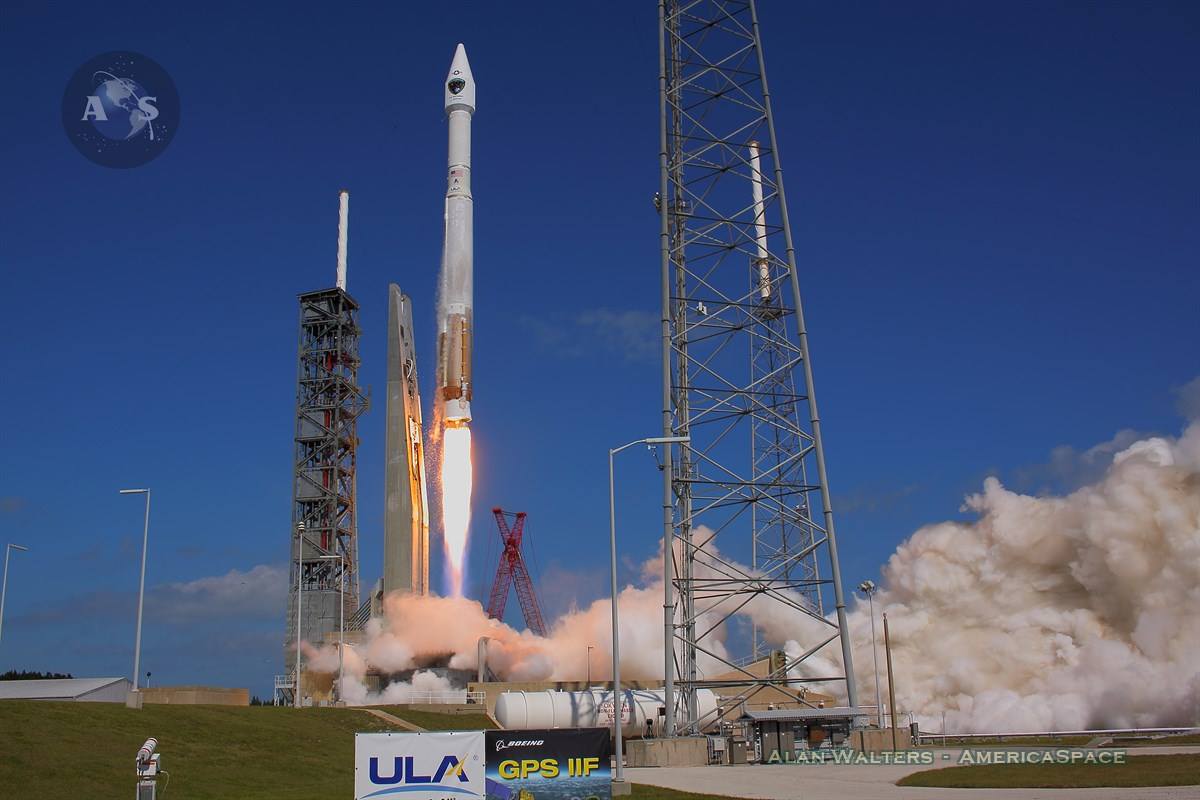
The “new leadership team represents the top professionals in their respective areas and leaders that have demonstrated an exceptionally strong vision toward innovation and change,” said Dan Collins, chief operating officer.
ULA’s Vulcan rocket will transform the future of space launch and will offer customers unprecedented flexibility in a single system. In addition, ULA is preparing to return to human spaceflight with the launch of Boeing’s CST-100 Starliner atop the Atlas V rocket.
“All of the innovation and game-changing advances mean more capabilities in space, which means more capabilities here on Earth, and we haven’t even begun to realize the full potential of space exploration and what future capabilities it holds,” said Bruno.
“We cannot even begin to imagine how new innovators will use space travel to progress a multitude of industries – from medicine to telecommunications to national security. The opportunities in space are truly endless.”
The new ULA Executive Leadership Team Includes:
- Liane George: Human Resources. She had been with Sierra Nevada.
- John Keenan: Chief Information Officer. He had been the vice president of IT at Newmount Mining Co.
- Charlie Krisch: Standard Services
- Laura Maginnis: Custom Services
- Cindy Nafus: Quality, Safety & Mission Success
- Paul Neary: Chief Financial Officer. He had been with Boeing.
- Mark Peller: Major Development
- Robbie Sabathier: Washington Operations and Communications
- Dr. George Sowers: Advanced Programs. He had been running ULA’s Human Launch Services
- Brett Tobey: Engineering
- Gary Wentz: Human Launch Services, who was hired away from Paul Allen’s Stratolaunch
BELOW: Additional photos from the successful launch of GPS 2F-11 from Cape Canaveral, Fla.
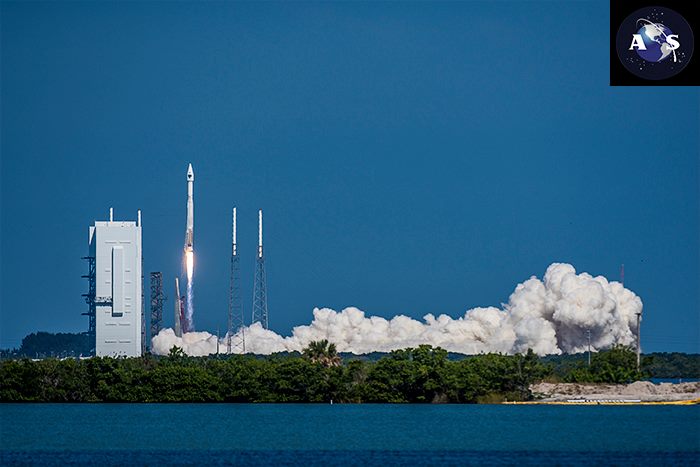
Be sure to “Like” AmericaSpace on Facebook and follow us on Twitter: @AmericaSpace
.
Missions » GPS » Missions » GPS » GPS IIF-11 »



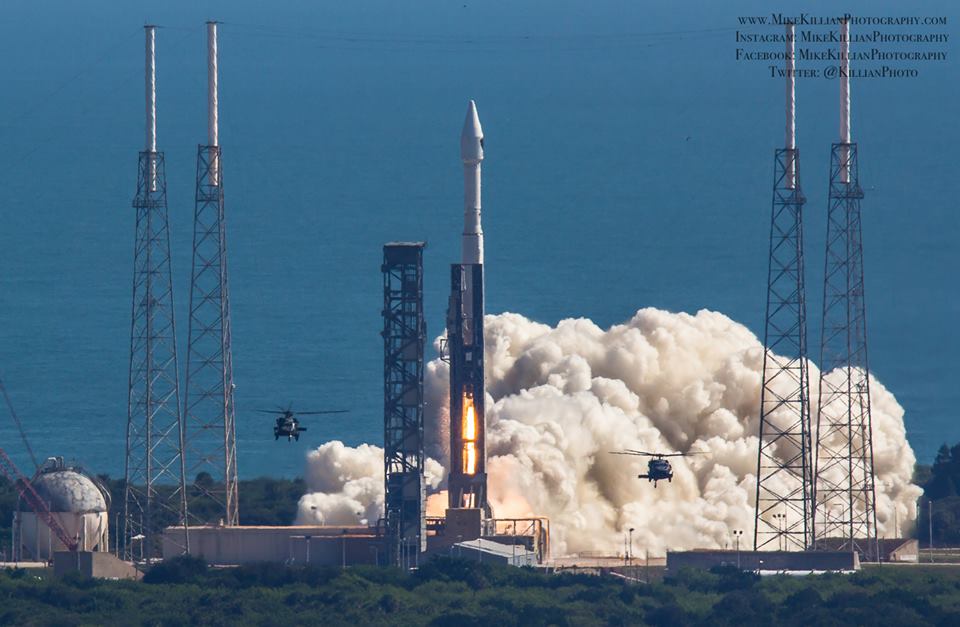
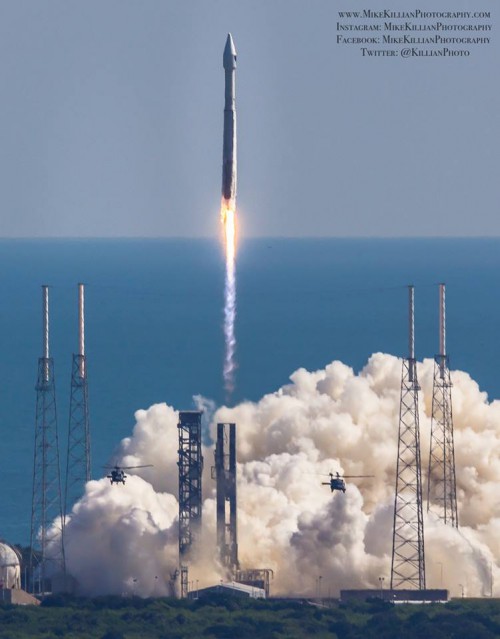
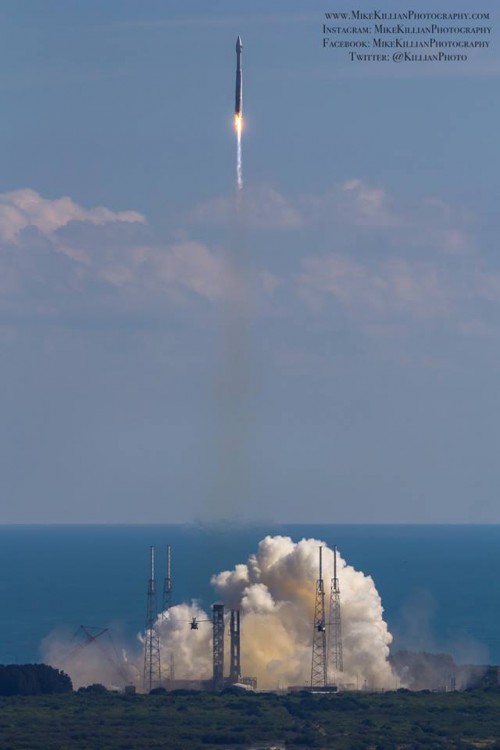
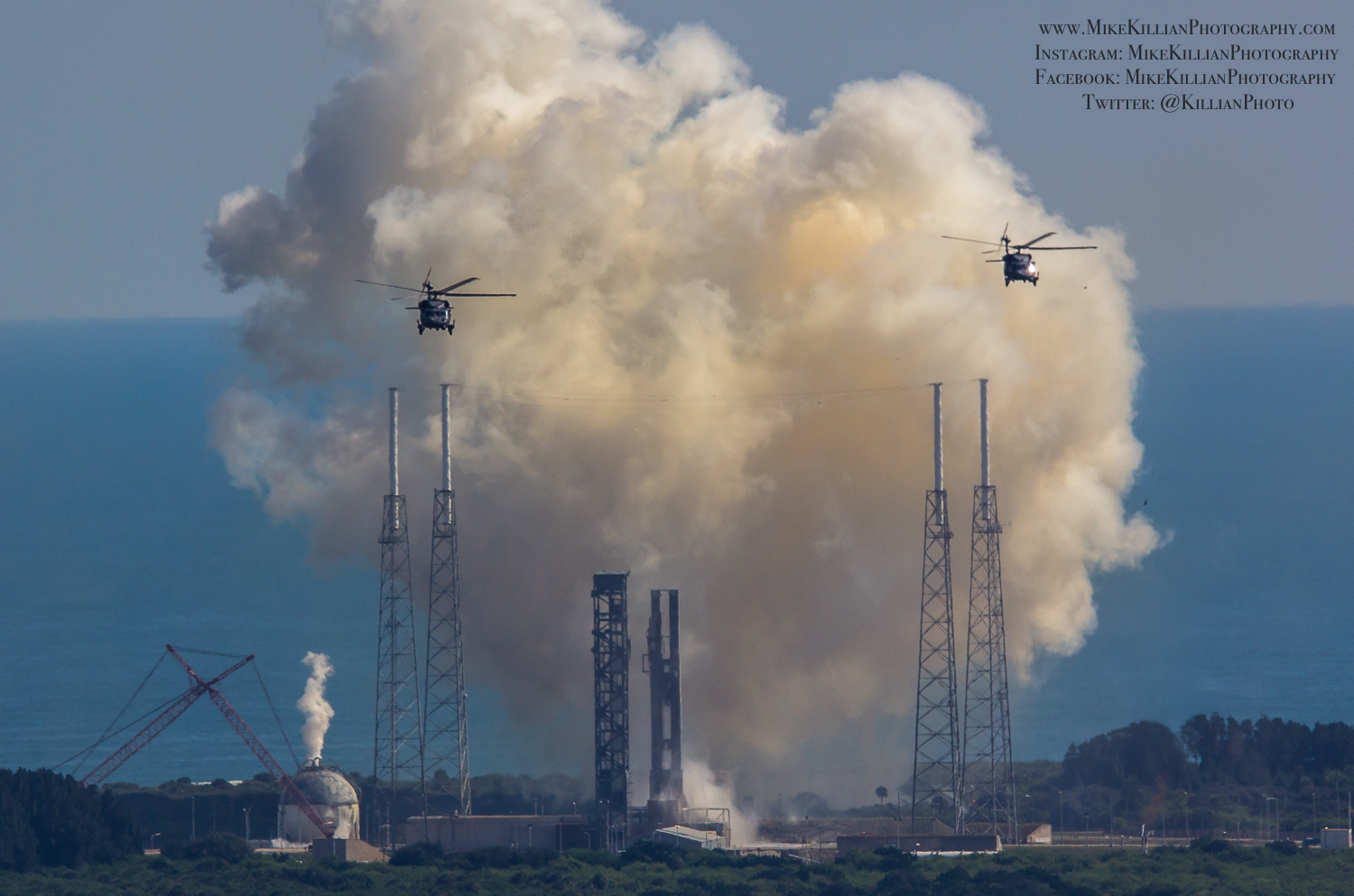
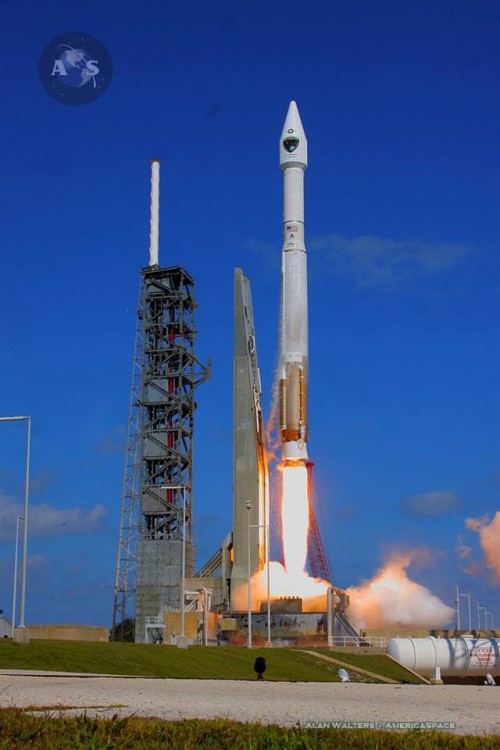

“We cannot even begin to imagine how new innovators will use space travel to progress a multitude of industries – from medicine to telecommunications to national security. The opportunities in space are truly endless.”
We cannot begin because we are not doing space travel. We are going nowhere- just in circles. And the NewSpace cash cow is wearing out. The call for several billion extra to extend the life of the ISS will soon be heard shouted from the mountaintops.
There is no multitude; the military aside, there is only one commercial enterprise and that is essentially cell phone towers at 23,236 miles above sea level. And this one business may not be endless considering the junkyard up there. In fact, there are emerging alternatives to GEO satellites that could suddenly make that one business as obsolete as the rotary phone.
Innovation starts with returning to the Moon- and the Vulcan is not a Moon rocket. So I am not so excited. Duplicate the tooling at Michoud and double and triple the workforce to increase SLS core production- and build a lunar lander- and get some funding for a Moon return and then make exciting speeches. Until then there is nothing exciting about the situation.
“Innovation starts with returning to the Moon- and the Vulcan is not a Moon rocket.”
ULA’s Vulcan in a three-core, or five core, heavy version, just like an Atlas V in a three core heavy version, would be quite useful for transporting supplies to Lunar bases.
We need the super heavy SLS and International Orion for Lunar exploration and ISRU missions.
However, medium and heavy launchers could also play useful and needed Lunar supply roles for Lunar bases.
Yep, and a three-core, or five core, Antares heavy launcher would also be nice to have for various Lunar, commercial, and scientific missions.
“ULA’s Vulcan in a three-core, or five core, heavy version, just like an Atlas V in a three core heavy version, would be quite useful for transporting supplies to Lunar bases.”
No it wouldn’t. There is not substitute for a Super Heavy Lift Vehicle with hydrogen upper stages. It is go big or don’t bother and stay home.
The SLS is actually just a way to begin and is not big enough for building any infrastructure on the Moon. These companies and their inferior lift vehicles are not bothering and staying home- even if they say the opposite.
“Duplicate the tooling at Michoud and double and triple the workforce to increase SLS core production- and build a lunar lander- and get some funding for a Moon return and then make exciting speeches.”
That’s not going to happen until there is an imminent or perceived threat against the U.S. that the President or Congress can use to justify spending the extra billions. The threat can be anything from another nation increasing its funding to establish a lunar base(controlling lunar space) or several meteor impacts in the U.S.(like what happened in Russia in 2013). Otherwise the President and Congress will be happy with “trickle down” funding for NASA.
Well if they won’t spend money on the Moon then the far more expensive Mars mission is NEVER going to happen. And according to Bolden that means “NASA is doomed.”
“And according to Bolden that means ‘NASA is doomed'”
Yep, NASA Administrator Charles Bolden is right.
I’m glad everyone got the ‘President’s and Lori Garver’s’ odd messages’ on that subject several years ago.
Unfortunately, dooming NASA by having it blindly following the ‘nonscientific huckster’ is part of the President’s ‘goofy plan’ to get rid of the agency’s human beyond LEO exploration capabilities, and give most of NASA’s budget, to the ‘huckster’s’ ‘club of billionare rocketeers’.
Congress may have a different and much better plan. See the broadly bipartisan and pro Moon exploration NASA Authorization Act of 2010 (PL 111–267).
“‘goofy plan’ to get rid of the agency’s human beyond LEO exploration capabilities, and give most of NASA’s budget, to the ‘huckster’s’ ‘club of billionare rocketeers’.”
Too shrill, tone it down. I am the last one to say that so you might want to pay attention. I would suggest you lay off the personal insults and address the company and it’s cheerleaders. “Goofy” and “Huckster” is really what you label yourself when you try to brand a billionaire as an idiot. He might have a few idiotic ideas but he is definitely no fool and that makes you the bad actor.
I have enough fingers wagged at me for supposedly doing what you are doing but that is almost always from Musk groupies pretending to be non-partisan.
I don’t think NASA is “doomed.” Someone at NASA has been doing a lot of manipulation of NASA’s budget and documents to back up the manipulation. First Constellation gets doomed in the Augustine report, then, outright canceled by the President. The Senate saves the SHLV and Orion Deep Space capsule, and keeps strict control of the purse strings for it. While dooming the Ares I and the LEO version of Orion.
Fast forward to the present…All the funds that would’ve went into the Ares I and LEO Orion is going to the “government funded CCP.” Instead of Lockheed building what was essentially 2 different Orion vehicles, NASA competitively awarded development of what is essentially a “Lite Orion” concept to Boeing and SpaceX. Ares I concept morphed into 2 launch vehicles Atlas V(soon to be Vulcan) and Falcon 9 1.1FT(or whatever it’s called). The funds for these projects never would’ve been approved by the President under Constellation, but, under the guise of CCP he approved them(though monitored closely by Congress). Yep, funds were switched between accounts and program names changed to make everyone happy(again under the watchful eyes of the President & Congress).
As far as the LEO space capsules are concerned, Boeing has said that it’s capsule’s systems will have commonality with Orion’s to lessen the time it takes to train the astronauts that will be flying in the Starliner & Orion. Don’t know about SpaceX, their systems may not have as much commonality with Orion.
What about the landers, habitats and other systems that NASA was in the process of designing for Constellation? They still have them. Many are starting to pop up now in the form of NASA sponsored studies(pre-development) to private companies. So the Constellation Program as was originally envisioned, has evolved to satisfy the current political situation. I don’t think that NASA ever really stopped planning to back to the moon to establish a moon base(and that will be competitively awarded to private companies). They just couldn’t say it in public against the President’s policy.
“Don’t know about SpaceX, their systems may not have as much commonality with Orion.”
The only public information of which I am aware was the “video tour” SpaceX recently released of the new version of what they say is their flight prototype.
The only controls visible were:
(1) Two flat screens (presumably touch screens, but how will that work with the crew wearing launch/entry pressure suits with multilayer gloves).
(2) Five rectangular buttons place very close to each other in a row with no visible inadvertent activation guards visible.
It was not possible in the video to read the markings on the manual controls, but in a screen capture it was possible to read the markings on the central button and the one directly to its left. Those labels read:
(1) Central Button – Deorbit Now (who knew it was so simple).
(2) Left Button – Depress Now (better hope nobody, wearing those multilayer gloves, “fat fingers” those two buttons).
If that really represents the SpaceX design, better all hope there are few (if any) similarities between the Dragon and Orion controls.
“I don’t think that NASA ever really stopped planning to back to the moon to establish a moon base-”
Really? It is all just a big secret….with NASA running an invisible space agency planning on doing exactly the opposite of what they are saying?
Well listen to what Bolden is saying in his speeches. He mentions “lunar orbital infrastructure, La-grange point stations and something about testing the vehicles for Mars exploration in lunar orbit using the Orion space craft with a habitat module attached, etc…” Where do you think they are going to test the Mars surface exploration vehicle and surface habitats at? And, if it can land on Mars, then, it can land on the moon. NASA may not be able to mention moon base under Obama, but, they can use Mars for moon in their language and keep investing in the systems needed. That’s what I interpret NASA doing.
I think you have definitely crossed the line between interpretation and fantasizing. Especially considering what Bolden said at the last conference concerning the Moon:
“The US does not have to be the country that says, ‘We’re going, follow us,’” he said. “We’re all going back to the surface of the Moon. But, it’s just that the United States has no intention of leading that effort. We will support and be along with anybody that goes.”
Sure, we are all going back.
“I don’t think that NASA ever really stopped planning to back to the moon to establish a moon base-”
Yep.
The SLS design came in large part from the ‘Jupiter launcher crowd’ of mainly NASA engineers acting in a ‘hidden revolt’.
And NASA engineers can read the pro Moon exploration NASA Authorization Act of 2010 (PL 111–267). Why should they waste their time on the ‘huckster’s Mars nonsense’?
Or more obviously, ‘I don’t think that NASA ever really received the Congressional guidance and funding needed to do the planning and build the modules and many systems needed to send astronauts to Mars to establish a Mars base-‘
The ‘huckster’ can read, and he knows full well from reading the pro Moon exploration NASA Authorization Act of 2010 (PL 111–267) that a broadly bipartisan Congress wants NASA’s SLS and Orion heading back to the Moon with international crews.
Now the only real question for the ‘huckster’ is how to get as large a piece of the GEO satellite and NASA Lunar mission ‘action’ as possible.
To do that he needs a super heavy launcher and to get the large engines for a reliable super heavy launcher he needs time, and thus we get to the ‘backstabbing and slow rolling’ of the SLS and Orion and the ‘grabbing’ of a twenty year monopoly on NASA’s Launchpad 39A, a launchpad that is needed for risk reducing ‘SLS/Orion launch on need’ missions and economical ‘dual SLS Lunar missions’.
James – “ULA’s Vulcan in a three-core, or five core, heavy version, just like an Atlas V in a three core heavy version, would be quite useful for transporting supplies to Lunar bases.”
Colorado – “No it wouldn’t. There is not substitute for a Super Heavy Lift Vehicle with hydrogen upper stages. It is go big or don’t bother and stay home.”
The ULA Atlas V currently has a very reliable and high performance hydrolox powered upper stage.
ULA’s upcoming Vulcan is supposed to have a new hydrolox upper stage that is known as the powerful, super nifty, and very large Advanced Cryogenic Evolved Stage, or ACES.
A tri core, or five core, Vulcan with the maximum propellant version of the ACES would be very useful for various Lunar supply missions because a tanker spacecraft adding liquid hydrogen and liquid oxygen propellants to the ACES both in LEO and in a high Lunar orbit should be quite doable.
The constant use of the “the huckster” is a childish personal insult and does not read well. It turns people off and by association makes myself and the few others who are critical of NewSpace look bad. Why don’t you take a hint and tone it down James?
“-a tanker spacecraft adding liquid hydrogen and liquid oxygen propellants to the ACES both in LEO and in a high Lunar orbit should be quite doable.”
Actually, it is not “quite doable.” While the piston engine to manage boil-off is ingenious it is not magic because hydrogen is not that easy to re-liquify; there is an unavoidable contamination with an exothermic form of the molecule that makes the entire scheme problematic. Very few people understand this- storing hydrogen indefinitely is a difficult proposition on Earth and in space it is not practical at the present time.
This is the main hole in the NewSpace fuel depot miracle- that and the fact that transferring hydrogen is a very difficult process that involves pre-cooling the entire system and receiving tank with liquid helium. Re-liquifying and maintaining LOX and liquid methane are much easier propositions but hydrogen is what produces that over-400 Isp that seems to be used when discussing all these schemes and it is a deception.
As for transporting supplies to the Moon the NewSpace idea of what “is useful” is a joke. A 130 ton lander is reasonable to start with and that requires two evolved SLS launches- one to send the lander up and a second for the Earth Departure Stage to take it to the Moon.
Unless the schedule is 20 flights a month from 3 different launch sites (as envisaged for the Space Shuttle program) even these maximum payload missions will make very slow progress towards establishing a cislunar infrastructure- the next iteration of SLS with double or triple the lift-off thrust is required for any realistic program of lunar development.
“Unless the schedule is 20 flights a month from 3 different launch sites (as envisaged for the Space Shuttle program)”
Sorry, I am not sure where that number came from- I believe it was something over 50 a year as the number when the shuttle would “break even” and pay for itself. This was of course a blatant lie on several levels- much like the NewSpace claims of reducing launch costs by landing on barges and reusing stages.
“-a tanker spacecraft adding liquid hydrogen and liquid oxygen propellants to the ACES both in LEO and in a high Lunar orbit should be quite doable.”
“Actually, it is not “quite doable.” While the piston engine to manage boil-off is ingenious it is not magic because hydrogen is not that easy to re-liquify; there is an unavoidable contamination with an exothermic form of the molecule that makes the entire scheme problematic. Very few people understand this- storing hydrogen indefinitely is a difficult proposition on Earth and in space it is not practical at the present time.”
I said “a tanker spacecraft” and did not say anything about “storing hydrogen indefinitely”.
If you want to store hydrogen for long periods of time, using the super cold environment of a Lunar polar crater might make sense. But you would still need refrigeration units because even the interior of a polar crater would not be cold enough. Propane might be a useful propellant for the Moon and Mars.
But for many cislunar uses, burning Lunar produced H2O2 with aluminum nanoparticles would probably work just fine. Use what works. In some situations it might even make sense to burn H2O with aluminum or magnesium nanoparticles.
“hydrogen is what produces that over-400 Isp” Actually there are probably several other possibilities.
And the real question is a spacecraft’s overall mission safety. Lunar ISRU should help with cislunar transportation safety issues.
And I often ‘push’ the idea of using dense propellants that are easy to store and use, irregardless of their over or under 400 Isp.
I do like the simplicity, reliability, and general safety of pressure-fed rocket engines.
See: ‘Hawthorne’s Other Rocket Company’ by Debra Werner — SPACENEWS November 2, 2015
Again, ‘Use what works’.
You’re not arguing with me, but maybe with someone else.
“H2O2 with aluminum nanoparticles would probably work just fine. Use what works. In some situations it might even make sense to burn H2O with aluminum or magnesium nanoparticles.”
It “might even make sense” if there were actually rockets that used “nanoparticles.”
-hydrogen is what produces that over-400 Isp. “Actually there are probably several other possibilities.”
Probably? Don’t think so.
“You’re not arguing with me, but maybe with someone else.”
I think you are starting to babble now and need to give it a rest James.
Look up ALICE rockets. They burn aluminum nanoparticles.